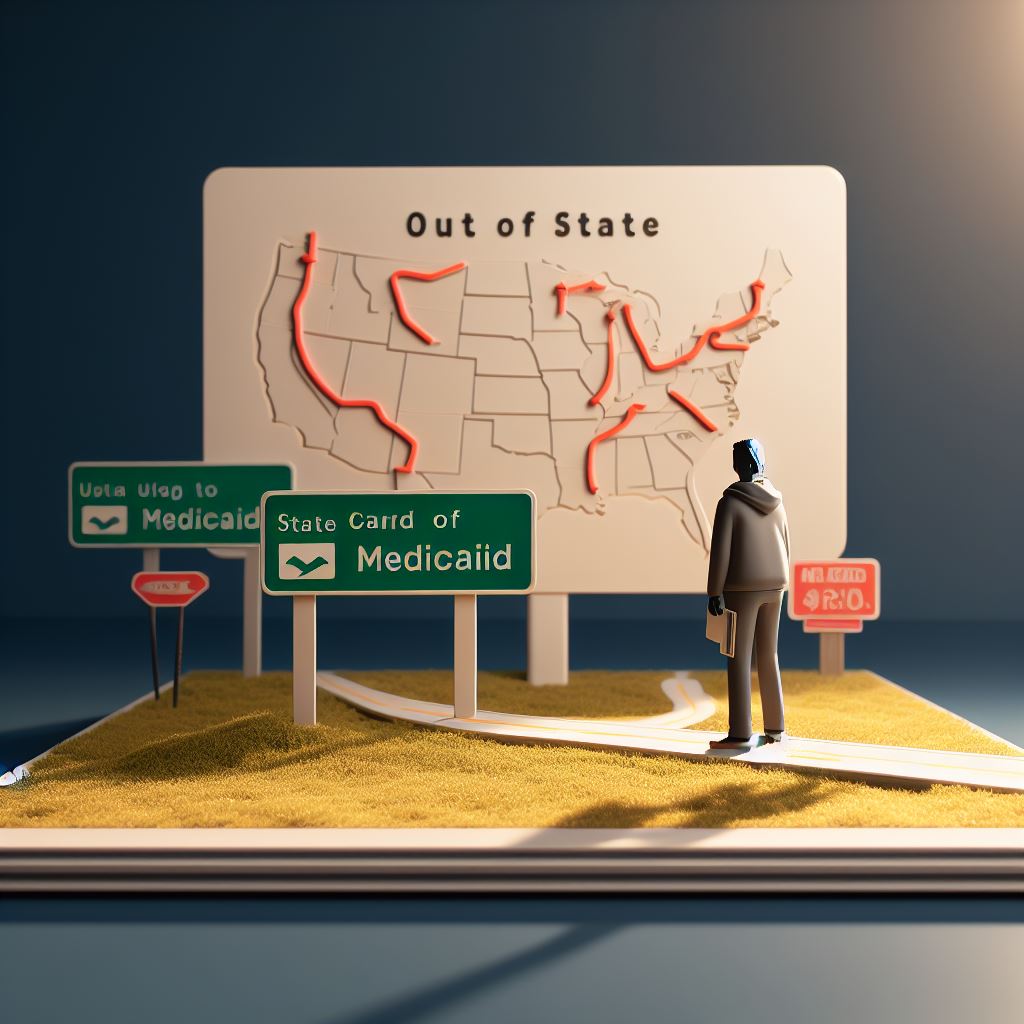Can Medicaid Be Used Out of State – How Does It Work?

Medicaid offers access to long-term health care to low-income individuals and families.
While it is a convenient program that supports millions of Americans, it is primarily designed to be used in a specific state. Therefore, it cannot be used out-of-state for non-emergency medical care.
The Medicaid program is both federal and state government funded. The state government funding limits its accessibility to other states.
Besides, its eligibility criteria and the scope of coverage differs from state to state.
That said, there are specific circumstances under which some states may approve the use of Medicaid out of state.
Below is a look at such circumstances and whether you need pre-authorization.
Circumstances Under Which Medicaid Can Be Used Out of State
The Advising Congress on Medicaid and CHIP Policy stipulates the following situations for out of state Medicaid coverage:
- A medical emergency. For example, as a result of an accident or illness while the beneficiary was out-of-state
- If holding off treatment until the patient is back in their state endangers their life or health
- If the treatment services are more readily available in another state
- If traveling back to the beneficiary’s state would put their health at risk
- If your doctor recommends that your treatment is carried out of state
How to Get Out-of-State Medicaid Treatment
The process of seeking out-of-state Medicaid treatment varies from state to state. While some require pre-authorization, others do not.
The choice of healthcare providers may be limited. Most states pay lower rates to out-of-state health providers than in-state providers.
They also screen the provider even if they are already Medicaid and Medicare service providers.
Therefore, some providers are adamant about serving out-of-state Medicaid beneficiaries. However, states like California have an express enrollment process for out-of-state providers.
Hospital services comprise the highest percentage of out-of-state Medicaid spending. Generally, children with disability take up the highest portion of out-of-state spending.
Following the enactment of the Advancing Care for Exception (ACE) Kids Act in 2020, it is now much easy for children with disabilities to access out-of-state Medicaid treatment.
If your doctor recommends out-of-state Medicaid treatment, they should write a letter to the department of health in your state to facilitate prior authorization.
Medicaid Switching States – How to Transfer Medicaid to Another State
There is no option to transfer Medicaid services from one state to another because the state government administers Medicaid.
Therefore, there are different eligibility criteria from one state to another. You can also not have Medicaid coverage in more than one state.
Therefore, if you are relocating from one state to another, you will have to cancel your Medicaid in your current state and make a fresh application in the new state.
You will have to go through the asset and income tests and meet the required eligibility criteria to qualify in the new state.
Although it is inconvenient and tedious, the good news is there is no waiting period for applying for Medicaid once you relocate.
If you qualify, it typically takes 15 to 90 days to get approval. Most states allow you to submit your application online.
If you want help and support with your application in the new state, consider consulting with a Medicaid planner.
They will help you to determine if you meet the eligibility criteria in the state you have located to.
They will also help you with the application process, including gathering the necessary documents, filling out the required paperwork, and improving your chances of qualifying.
To minimize the coverage gap during the transition, plan for the Medicaid switch ahead of your relocation.
Research the eligibility criteria in the new state and gather the necessary documents. Engage a Medicaid planner earlier on to help you restructure your finances if necessary.
They may also recommend some Medicaid waivers that would be beneficial during state transitions.
For example, some states offer retroactive Medicaid coverage, which enables you to continue receiving Medicaid coverage for up to 3 months as you await your new application’s approval.
However, it is important to have a backup care budget as you may have to pay for healthcare services out of pocket before the retroactive Medicaid coverage comes into effect.
In this event, keep your receipts for medical services received during the waiting payment and use them to seek reimbursement.
If you are receiving Home and Community Service Based Services (HCBS) through a Medicaid waiver, making arrangements to continue accessing long term care may be complicated.
The opportunities for Medicaid waivers are usually limited and competitive. Also, the service available in your current state may differ from those in the new state.
Therefore, even if your state may be willing to cover you for out-of-state access to these services, they may not be available in the new state. As such, you would have to set aside a budget before relocation.
Conclusion
Whether traveling to a new state or relocating, you must consider your Medicaid services ahead of time.
Since each state has its own Medicaid eligibility criteria and the program is partially funded by the state, you typically would not be allowed to use it in another state, except in instances of emergency medical service.
Even so, you may require prior authorization for covered services and might not be able to access the full Medicaid benefits you qualify for in your state.
In the event of a relocation, you will have to cancel your existing Medicaid to apply afresh in the new state.
Some states offer retroactive Medicaid coverage to support you as you wait for the new application to go through. Either way, it may take some time to kick in.
Therefore, it is best to have backup private health coverage or cash-at-hand to cover you if you travel in case you fall sick out of state or are relocating to meet your medical care costs before your new application is approved.



